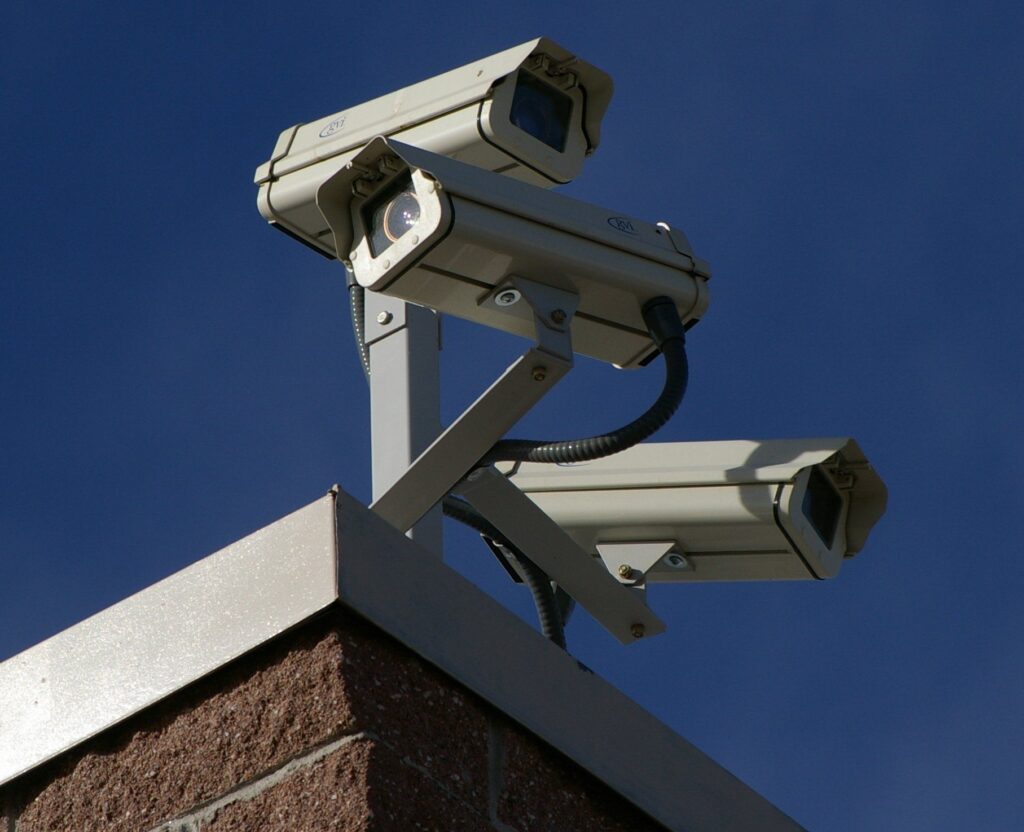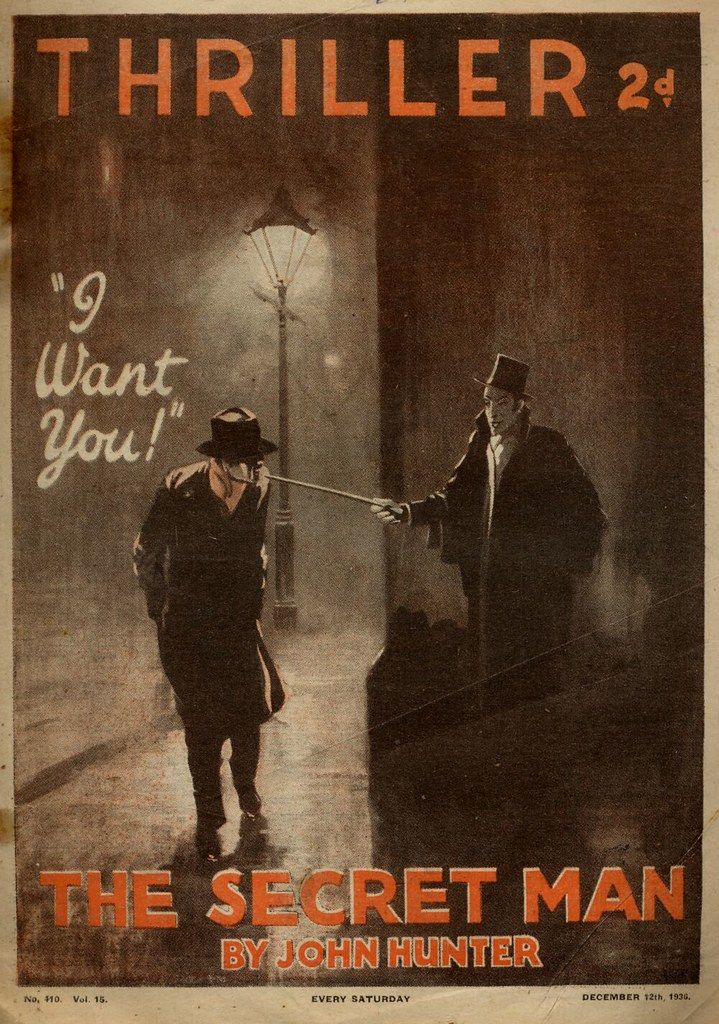
Since the dawn of civilization, the quest for an advantage, a secret edge over rivals, has driven individuals and nations alike into the shadows. From Jacob’s cunning deception of Isaac in the Old Testament to Julius Caesar’s widespread network of informants, the art of espionage is as old as human ambition itself. It’s a world where clandestine meetings, hidden gadgets, and subtle deceptions aren’t just plot points in a thrilling novel; they are the very fabric of history, shaping empires and altering the course of conflicts.
What truly defines the ‘hacker’ isn’t necessarily a computer and a keyboard, but rather the ingenious ability to exploit vulnerabilities—whether in human nature, a system, or even a physical environment—to gain unauthorized access or control. Historically, these techniques were analog, relying on wit, charm, and carefully crafted tools. They were ‘simple’ in their execution but profound in their impact, allowing spies to achieve their goals against incredible odds. This deep dive into the historical toolkit of spies reveals that the core principles of hacking have remained remarkably consistent over millennia.
Join us as we pull back the curtain on some of the most fascinating and often overlooked ‘hacks’ of the past. From the deadly elegance of a poisoned jewel to the intricate dance of a secret message, these are the cunning methods that allowed agents to operate unseen, whisper secrets across battle lines, and fundamentally alter the course of events. Prepare to discover the masterful artistry of deception that predates the digital age, a testament to human ingenuity in the pursuit of secrets.

1. **Poison and Drugs**
The use of poison and drugs in espionage is a tactic as ancient as it is chilling, demonstrating a clear understanding of human vulnerability. It’s a method that bypasses direct confrontation, opting instead for a subtle, insidious approach to eliminate threats or extract information. The quiet effectiveness of these substances makes them a preferred tool for those operating in the shadows, leaving little trace of their true intent.
Consider the turn of the 16th century, when Pope Alexander VI, arguably one of history’s most corrupt pontiffs, had children who were masters of this dark art. They employed jewelry that concealed poison pills or powder, allowing for the swift and discreet dispensation of deadly substances into an unsuspecting victim’s drink. This method combined luxury with lethality, ensuring a deadly outcome wrapped in an aura of social grace.
The mid-20th century saw the evolution of these methods, integrating them into everyday social interactions. In the 1950s, a gentleman could distribute a drug merely by lighting someone’s cigarette, using a matchbook cleverly designed to contain the substance and release it over the victim’s drink. Similarly, ladies in hats and gloves could conceal pills, retrieving them with ease to slip into a glass, highlighting how even fashion could become an instrument of espionage. These examples underscore the constant innovation in the application of poisons and drugs, adapting to contemporary customs and technologies.
Read more about: Unraveling the COVID-19 Paradox: Why Some Stay Unscathed While Others Endure Long-Term Symptoms

2. **Dead Drops and Brush Passes**
When it comes to exchanging sensitive information, anonymity and deniability are paramount, and few methods achieve this as elegantly as the “dead drop” and “brush pass.” These techniques, famously portrayed in countless spy thrillers, are not mere cinematic flourishes but tried-and-true tactics from the real world of espionage. They allow for the transfer of intelligence without direct contact between agents, significantly reducing the risk of exposure.
According to *Spycraft* by Robert Wallace and H. Keith Melton, the “dead drop” is one of the most frequently employed tactics for information exchange. The process involves concealing information in an ordinary, easily discarded item, such as an old glove or a fast-food bag. This seemingly innocuous package is then placed at a pre-arranged, specific landmark—perhaps a park bench marked with lipstick or a particular telephone booth. This meticulous planning ensures that the drop blends into its surroundings, raising no suspicion.
Once the item is placed, one party drops it off, and the other retrieves it after a designated time interval, ensuring that the two agents never directly interact. This temporal separation adds another layer of security, making it incredibly difficult for surveillance to link both parties to the exchange. The beauty of the dead drop lies in its simplicity and the way it leverages everyday objects and locations to facilitate high-stakes transfers.
The “brush pass” offers a more dynamic, albeit riskier, method of transferring information, often depicted in movies. This technique relies on a fleeting, almost imperceptible physical contact. An accidental bump or a staged trip can be all it takes for microfilm, money, or vital notes to be discreetly passed from one agent to another. It requires impeccable timing, coordination, and a convincing performance to appear completely innocent, making it a high-stakes maneuver that can go horribly wrong if not executed perfectly.
Read more about: From Seamless Drives to Software Snafus: Unpacking the Digital Divide in 10 Brand-New Cars

3. **Coded Tattoos**
The idea of a message literally etched into one’s skin, invisible until the right moment, is a testament to the ingenious ways ancient spies communicated. While modern technology has offered countless new avenues for secret messages, the body itself was once a canvas for clandestine communication. History.com reveals that coded messages in the form of tattoos have been utilized as far back as 440 BC, highlighting a remarkable foresight in information security.
Herodotus, the renowned historian and author of *The Histories*, which chronicles the Greco-Persian Wars, shares a fascinating account from this ancient period. He tells the story of a king who, needing to send a secret message to his nephew requesting rescue, chose an extraordinary method. The king had the message tattooed directly onto his servant’s shaved head. This daring act ensured that the message was carried with the utmost secrecy, hidden beneath the servant’s growing hair.
Upon reaching his destination, the servant’s head was shaved once more, revealing the hidden message to the intended recipient. This ancient technique demonstrates an incredible understanding of steganography—the art of concealing a message within another message or physical object. It relied on the message being undetectable to all but those who knew how and where to look, a truly “simple hacking technique” that exploited the most natural of coverings: hair.
Read more about: Gen Z’s Office Wardrobe Woes: 11 Corporate ‘Staples’ They’re Ditching (And Why It’s Landing Them in HR!)

4. **Physical Bugging Devices**
The realm of surveillance underwent a revolutionary transformation in the 1960s, as technology began to advance in leaps and bounds. This era ushered in the age of miniaturized bugging devices, profoundly changing how information could be secretly acquired. These tiny technological marvels allowed agents to listen in on private conversations with unprecedented ease, turning everyday objects and spaces into listening posts.
These devices were engineered to be incredibly small, making them easy to conceal in plain sight. They could be discreetly attached to the undersides of tables, slipped into the speaking end of telephone handsets, or even hidden behind pictures hanging on a wall. Their minute size and inconspicuous placement ensured that the subjects of surveillance often remained completely unaware that their most private discussions were being meticulously overheard and recorded.
Beyond just eavesdropping, these bugging technologies also evolved to serve other critical espionage functions. An agent could, for instance, leave behind an object such as a jacket or a pair of sunglasses that was secretly equipped with a transmitter. This device would then continuously transmit its location, effectively creating a live target for an attack squad or a tracking team. This innovative application expanded the utility of bugging devices from mere listening tools to active tracking instruments, providing real-time intelligence for operational purposes.
Read more about: Decoding the Digital Underworld: 14 Essential Gadgets for Cyber Security Professionals

5. **Secret Codes and Cryptology**
The backbone of clandestine communication, secret codes, and cryptology have been integral to espionage throughout history, allowing messages to travel securely across enemy lines or within trusted networks. These methods transform plain language into an unintelligible jumble for unauthorized eyes, making them fundamental for protecting sensitive information. The ingenuity involved in creating and breaking these codes has often dictated the success or failure of critical missions.
Beyond complex ciphers, subtle methods of communication also played a significant role. Imagine a seemingly innocuous detail, like the color of a person’s shirt, serving as a silent indicator of a mission’s success or failure, or signaling the urgent need for a clandestine meeting. Specific pieces of jewelry, certain carefully chosen phrases embedded in ordinary conversation, or even deliberate inflections in radio broadcasts could subtly warn of danger or grant authorization for a critical operation to proceed. These low-tech ‘hacks’ leveraged common social cues to convey vital intelligence under the noses of adversaries.
The use of symbols, cryptology, and codes became exceptionally sophisticated and widespread during major global conflicts. A prime example is World War II, when an entire complex was established at Bletchley Park in England. This secret facility gathered some of the era’s brightest mathematical minds, including legendary figures like Gordon Welchman and Alan Turing, with the singular goal of cracking Nazi codes. Their unparalleled efforts in deciphering the Enigma code provided the Allies with crucial intelligence, profoundly influencing the war’s outcome and demonstrating the immense power of cryptographic mastery.
Sir Francis Walsingham, Queen Elizabeth I’s spymaster in the 16th century, also made extensive use of codebreakers and forgers within his “Watchers” network. His cryptanalyst, Thomas Phelippes, was instrumental in exposing the Babington Plot, decoding messages that proved Mary, Queen of Scots’ complicity in a scheme to assassinate Elizabeth. Walsingham’s reliance on these advanced communication hacks underscored their critical importance in national security, even centuries ago, securing Elizabeth’s reign and setting the stage for England’s Golden Age.

6. **Smuggling and Intimate Favors**
Espionage isn’t always about gadgets and codes; sometimes, the most effective tools are those that exploit social conventions and human relationships. Smuggling and the judicious use of “intimate favors” represent a powerful, if often controversial, category of hacking techniques. These methods capitalize on trust, social position, or personal charm to bypass conventional security measures, demonstrating how human intelligence (HUMINT) can be leveraged with devastating effect.
During the American Civil War, Southern women, facing dire shortages, became adept at these techniques. Wealthy socialite Rose O’Neal Greenhow, for instance, gained notoriety in Washington D.C. as a crucial Confederate spy. She ingeniously smuggled documents and vital medicines beneath her voluminous hooped skirts, a fashion statement that doubled as a covert cargo hold. Her effectiveness was amplified by her extensive social connections; she was “extremely friendly with some of the Union’s top officials,” allowing her privileged access and the ability to gather intelligence through seemingly innocent interactions.
This wasn’t an isolated phenomenon. As Confederate supplies dwindled, many Southern women became vital couriers, creatively hiding food and medicines. These items were often concealed under their skirts, inside a child’s doll, or tucked away in their bloomers, exploiting the societal reluctance to subject women and children to thorough searches. These daring acts underscore how women played a pivotal, though often unsung, role in Civil War espionage, using their perceived innocence and social standing as powerful tools for their cause.
Another remarkable example is Belle Boyd, a teenage society belle whose charm became her greatest weapon for the Confederacy. Despite her love for parties and fashion, she transformed into a fierce patriot. Boyd skillfully “coaxed secrets out of smitten Union soldiers,” using her allure to extract vital intelligence. She even hid ciphered messages in her hair before riding through the night to relay intel on troop positions, further showcasing the diverse and personal ways women contributed to the shadow war.
Read more about: Duke Cunningham, 83, Dies: Tracing the Complex Legacy of a Vietnam War Hero and Convicted Congressman

7. **Physical Surveillance**
Long before satellites and drones offered aerial views, the core of intelligence gathering relied on diligent, ground-level physical surveillance. This technique, the painstaking art of observation, involves watching targets, following their movements, and documenting their activities to understand their patterns, contacts, and intentions. It demands patience, keen observational skills, and the ability to blend seamlessly into any environment, making it a foundational ‘hacking’ method for information acquisition.
When the CIA identifies a person of interest—someone renting, leasing, or temporarily staying in a hotel—agents are often dispatched to move into the same building or onto the same street. This proximity allows for close observation, enabling operatives to monitor a target’s comings and goings, visitors, and routines without raising suspicion. Such deployments require meticulous planning and a deep understanding of urban environments to maintain cover.
The tools of physical surveillance have evolved, but the principles remain constant. Many agents historically possessed master keys to major hotels and upscale apartment buildings, granting them discreet access to crucial locations. For more dramatic operations, people have even been smuggled out of hotels in modified steamer trunks, a testament to the lengths spies would go to extract or protect assets. These methods underscore the ingenuity required to bypass conventional security and achieve strategic objectives.
Further technological advancements integrated cameras into everyday items like briefcases, lipstick tubes, books, and sunglasses, allowing for covert photography and video recording. For the highest levels of surveillance, capabilities expanded dramatically with satellites and aircraft equipped with advanced optics that could “take pictures and zoom in remarkably close.” These high-tech solutions brought a new dimension to physical surveillance, enabling wide-area monitoring and incredibly detailed imagery from afar, forever changing the scope of what could be observed.
Read more about: Unbreakable: Dissecting M. Night Shyamalan’s Enduring Superhero Origin, from Cult Classic to Universe Builder

8. **Disguise**
The ability to alter one’s appearance and blend seamlessly into any crowd is a critical ‘hacking’ technique in the spy’s arsenal, allowing for evasion, infiltration, and the invaluable element of surprise. Disguise is not merely about changing clothes; it’s about transforming one’s entire persona to deceive observant agents or unsuspecting targets. This art of transformation is central to throwing off pursuers and executing clandestine operations with impunity.
Common tools in a spy’s kit for altering appearance include wigs, hats, false beards, and mustaches, which can drastically change facial features and overall silhouette. Beyond these accessories, more subtle alterations are employed, such as hair coloring, shoe lifts to adjust height, and eyeglasses or sunglasses to obscure or change the perception of one’s eyes. Even something as simple as removing a coat can significantly alter an agent’s silhouette, allowing them to momentarily disappear and reappear as a different presence within a bustling crowd.
The mastery of disguise can be so profound that agents are able to achieve remarkable transformations. The context describes how “An agent can leave the hotel as a woman and come back as a man,” illustrating the extreme lengths to which operatives go to shed their identity and confuse surveillance. In even more audacious instances, “Some agents have even gone through minor surgery to alter their looks,” demonstrating a commitment to permanent physical alteration to create an entirely new persona that is virtually untraceable to their former self.
Fritz Duquesne, a German secret agent in WWI, was a master of disguise and deception. Driven by revenge, he successfully posed as various individuals, including a “Russian Duke Boris Zakrevsky” to charm New York’s elite and gather secrets. Later, he infiltrated Britain disguised as a Serbian colonel, showcasing how a well-executed disguise could provide critical access and operational cover, making him a formidable and elusive adversary throughout the war.”
As we’ve journeyed through the annals of espionage, we’ve seen how human ingenuity, psychological manipulation, and cleverly designed analog tools were once the bedrock of spycraft. From ancient deceptions to Cold War clandestine meetings, the principles of exploiting vulnerabilities have remained constant. However, the world has undeniably shifted. Today, the shadow wars are increasingly waged not with poisoned rings or coded tattoos, but within the intricate web of digital systems, where vulnerabilities lurk in lines of code and unprotected data.
The modern spy operates on a new battlefield—the digital frontier. This shift has introduced entirely new categories of ‘hacking’ techniques, often leveraging cyber vulnerabilities that can affect millions at once. These aren’t just theoretical threats; they are the unseen forces shaping global events, impacting everything from national security to our personal privacy. Let’s pull back the curtain on some of the most notorious digital hacks and the vulnerabilities they exploit.
Read more about: Cillian Murphy’s Intense New Netflix Drama ‘Steve’ Sparks Major Buzz: Everything You Need to Know

9. **British Library Cyberattack (2023)**
In a stark reminder that even venerable institutions are not immune to the digital frontier’s dangers, the British Library fell victim to a significant cyberattack in October 2023. The Rhysida ransomware group orchestrated this assault, leading to a massive exposure of 600GB of sensitive data after the library refused to meet their ransom demands. It was a digital siege that brought a pillar of knowledge to its knees.
The attackers likely gained their initial foothold by exploiting glaring weaknesses in the library’s authentication measures. This included the compromise of third-party credentials, a common entry point for threat actors, alongside a critical lack of multi-factor authentication (MFA) for contractors. Such basic security oversights allowed unauthorized access, turning a minor crack into a gaping chasm for the hackers.
The ramifications of this breach were extensive and long-lasting. Operations were severely disrupted, with critical services taking months to fully restore, paralyzing access for researchers and the public alike. The incident also came with a hefty price tag, costing the library an estimated £6–7 million in recovery efforts. This unfortunate event serves as a potent case study, emphasizing the absolute necessity of robust access controls, diligent MFA enforcement, and regular, thorough security audits to prevent such unauthorized intrusions in our increasingly interconnected world.

10. **MGM Resort Breach (2023)**
The glitz and glamour of Las Vegas’s MGM Resorts International couldn’t shield it from the sharp tactics of the hacking group Scattered Spider in 2023. This sophisticated breach caused a widespread system outage for the $14 billion gaming and hospitality giant, impacting everything from hotel reservations to casino operations. It was a crippling blow that highlighted the pervasive threat of modern cyber espionage even to titans of industry.
Researchers have since connected the ALPHV/Blackcat/Scattered Spider ransomware groups to the attacks on MGM, with ALPHV/Blackcat openly claiming responsibility for the chaos. This group didn’t just breach the perimeter; they boasted of achieving “persistency in the network with super administrator privileges,” demonstrating deep and prolonged access. Their method involved deploying ransomware only after effectively locking out MGM’s network, indicating they had established extensive visibility and implanted insidious backdoors for future exploitation.
The hackers went further, claiming to have exfiltrated a significant amount of data from MGM’s systems. They then leveraged this stolen information, threatening to expose any Personally Identifiable Information (PII) found unless a substantial ransom was paid. This classic “double extortion” tactic underscores the escalating risks of data exfiltration and the critical need for robust data protection strategies to prevent not just system disruption, but also the weaponization of sensitive customer information.

11. **Snowflake Breach (2024)**
The early months of 2024 brought news of a large-scale data breach targeting customers of Snowflake, the cloud data warehousing giant. This financially motivated attack, attributed to the threat actor UNC5537, wasn’t a triumph of sophisticated hacking techniques but rather an exploitation of a much simpler, yet devastating, vulnerability: exposed legitimate credentials. It exposed a fundamental flaw in basic cyber hygiene.
The modus operandi of UNC5537 was alarmingly straightforward. Threat actors simply obtained stolen login details, likely purchased from dark web markets or found through public credential stuffing lists, and then used them to access Snowflake accounts. Crucially, the accounts targeted were those lacking the essential safeguard of multi-factor authentication (MFA). This absence allowed them to bypass traditional security layers and seamlessly infiltrate cloud storage systems.
Once inside, the attackers stole vast quantities of sensitive data, which they then used to extort victims for financial gain. The impact was far-reaching, with data from prominent entities like Ticketmaster and Santander reportedly sold on cybercrime forums following the breach. This incident stands as one of the largest hacks of 2024, forcefully highlighting the critical and undeniable need for impeccable credential management and the universal enforcement of MFA across all digital platforms to prevent such easily avoidable yet profoundly damaging attacks.

12. **The Yahoo Hacks (2013 & 2014)**
Once the undisputed monarch of the early internet, Yahoo has endured a tumultuous decline, its fortunes not helped by revelations of monumental security breaches years after they occurred. In 2016, the company disclosed details of two staggering hacks that had taken place in 2013 and 2014, casting a long shadow over its legacy and sparking widespread concern among its dwindling user base. These were not mere hiccups, but catastrophic failures.
The 2013 breach compromised over one billion Yahoo accounts, a number almost incomprehensible in its scale, affecting names, dates of birth, security questions, contact details, and critically, passwords. A subsequent attack in 2014 affected a further 500 million accounts. While the exact overlap between the two hacks remains unclear, the sheer volume of compromised data cemented its place as the largest hack of a single entity in the history of the internet—a dubious claim to fame for a company struggling to regain trust.
The implications of these breaches extended far beyond Yahoo’s direct users. Due to the common tendency of internet users to reuse passwords and security questions across multiple platforms, the compromised data from Yahoo could potentially unlock accounts on entirely different services. If a user had a Yahoo email account years ago and later switched to Gmail but kept the same password, this hack meant their current email account could also be at risk, demonstrating the domino effect of credential reuse.
Reports later indicated that a major contributing factor to the breaches was the use of outdated encryption methods to protect user data. These antiquated algorithms were susceptible to being broken with relative ease by sophisticated attackers, rendering the passwords and personal information stored by Yahoo alarmingly vulnerable. This serves as a stark warning about the perils of neglecting modern cryptographic practices in an evolving threat landscape.

13. **Cl0p Gang Exploits Zero-Day in MOVEit Transfer App (2023)**
In a significant display of modern cyber warfare, the Cl0p hacking group unleashed a potent attack in 2023, targeting Progress Software’s widely used MOVEit Transfer app. This wasn’t just any attack; it leveraged a “zero-day” SQL injection vulnerability on May 27, meaning the flaw was unknown to the software vendor and, therefore, unpatched at the time of the exploit. It was a digital ambush that caught countless organizations off guard.
The reach of this vulnerability was truly global and extensive, impacting over 1,000 organizations and a staggering 60 million individuals worldwide. Among the high-profile victims were household names such as British Airways and the BBC, underscoring how a single software flaw in a popular enterprise tool can create a cascading wave of data breaches across diverse sectors. The interconnectedness of modern IT infrastructure means a vulnerability in one component can compromise many.
Although Progress Software moved quickly to address the critical issue, identified as CVE-2023-34362, by May 31, reports of new data breaches continued to surface for weeks and months thereafter. The U.S. Cybersecurity and Infrastructure Security Agency (CISA) prominently flagged the vulnerability, emphasizing its potential for extensive corporate data exposure and the grim prospect of future extortion threats. This incident vividly illustrates the devastating power of zero-day exploits and the ripple effects of supply chain attacks in the digital age.

14. **Microsoft Teams Outage (2023)**
Even the ubiquitous platforms central to modern business communication can stumble, as exemplified by the significant Microsoft Teams outage on June 28, 2023. This widespread disruption affected users across the globe, persisting for nearly two hours from 10:49 AM to 12:55 PM UTC. It was an incident that underscored the fragility of complex systems and our reliance on them.
The outage primarily impacted web access and new desktop client sign-ins, leaving many attempting to start their workday or join critical meetings in limbo. Curiously, existing and mobile clients, already authenticated, largely remained unaffected, suggesting a specific point of failure in the authentication process rather than a complete system meltdown. This differentiation offered a crucial clue to the underlying problem.
The root cause was traced back to a seemingly innocuous yet critical “authentication error” within a Teams back-end service responsible for configuration settings. Regrettably, this service was mistakenly configured to “require authentication,” leading to a cascade of denied configuration requests and subsequent operational failures. This simple misconfiguration directly hindered user access via specified channels, demonstrating how even a minor oversight in system setup can have massive implications for service availability and user productivity.

15. **Colonial Pipeline Ransomware Attack (2021)**
The 2021 Mother’s Day weekend saw a chilling reminder of how vulnerable critical infrastructure remains in the digital age, as the American fuel company Colonial Pipeline was hit by a devastating ransomware attack. The DarkSide ransomware group exploited the upcoming holiday, leveraging the reduced staffing and vigilance to unleash their malware on the company’s IT systems. It was a calculated strike designed for maximum impact.
The ransomware brought the entire IT systems of Colonial Pipeline to a grinding halt, forcing the company to suspend pipeline operations for a full week. While the physical pumping systems themselves remained functional, the inability to bill customers meant that services could not be continued, creating an unprecedented crisis. This disruption triggered widespread fuel shortages along the East Coast, leading to panic buying among retail consumers and the rescheduling of flights by airline carriers.
The attackers had not only crippled operations but also stolen 100GB of data, demanding a ransom of 75 bitcoins in exchange for the decryption tool necessary to restore systems. Colonial Pipeline, facing immense pressure to resume fuel supply, ultimately had to comply and pay the ransom. This difficult decision highlighted the dire consequences of such attacks and the complex ethical dilemmas they present to organizations responsible for vital public services.
One of the primary factors contributing to the success of this attack was a glaring lack of proper security controls and protocols within Colonial Pipeline’s IT systems. The hackers were able to exploit a specific vulnerability in a legacy Virtual Private Network (VPN) system that had been left unpatched or inadequately updated. This critical flaw provided the attackers with the initial access point they needed to infiltrate Colonial Pipeline’s network and deploy their ransomware.
Furthermore, a significant lack of preparedness and effective response planning by Colonial Pipeline exacerbated the crisis. The company was initially slow to react to the unfolding attack and struggled to contain the damage effectively and restore operations swiftly. This cumulative failure led to a prolonged and significant disruption to the fuel supply chain across the southeastern United States, causing widespread economic impact, shortages, and a surge in fuel prices at the pumps.
**The Enduring Dance in the Shadows**
As we reflect on these incredible tales of espionage, stretching from the ancient world’s cunning deceptions to the cutting-edge cyberattacks of today, one truth becomes abundantly clear: the game of secrets is eternal. While the tools of the trade have dramatically evolved—from poison-laden jewelry and coded tattoos to sophisticated ransomware and zero-day exploits—the core drama remains intensely human. It’s still about individuals risking everything to steal or protect vital information, driven by ambition, ideology, or even revenge. In this intricate, ever-changing dance in the shadows, the legendary spies of history may pass into memory, but their modern heirs continue the timeless pursuit, ever-adapting, ever-innovating, ensuring that the quest for an advantage through clandestine means will endure as long as nations compete and human nature remains complex.



